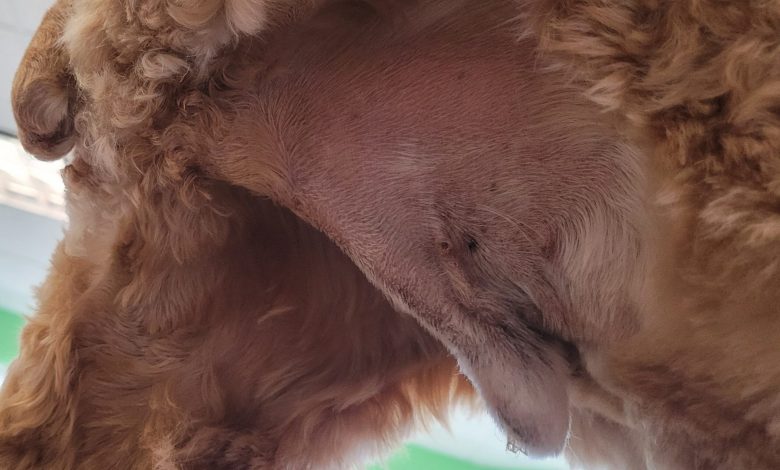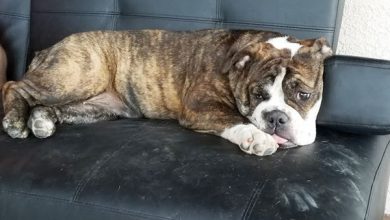What Is a Dog Sanitary Trim? – Dogster

Your dog runs in from his doggy door and jumps on the couch. You smile. Then it hits you. Dog poop smell. It’s the worst. Especially if you now have to clean the couch and your dog’s behind. Luckily, a simple dog sanitary trim will keep poop off you and your furniture.
What is a sanitary cut for dogs?
Sanitary trims cut down the hair around the belly, the back of your dog’s legs and private parts, so that when they relieve themselves, it doesn’t get in the hair and then get spread around. Sanitary cuts for dogs are really about preventing the spread of bacteria, more than for appearances, says Morgan Clemens, a certified professional groomer and owner of Pet Grooming by Morgan in Nampa, Idaho. And your dog will smell better if he doesn’t have urine and feces in his coat.
Will I notice a change before and after the dog sanitary trim?
There are a couple differences you’ll notice before and after a dog sanitary trim, but the idea is that when a dog goes the bathroom, the urine or feces has to move past a lot of hair, and that hair can act like a sponge, then gets rubbed off everywhere. After a dog sanitary trim, the urine and feces go onto the ground where they belong, and your dog stays cleaner.
What dog breeds need sanitary cuts?
Usually, long-haired dog breeds like Maltese, Yorkshire Terriers, Shih Tzu and Havanese need sanitary trims to control the hair growth around their back sides. However, Morgan says she doesn’t completely rule out sanitary trims for short-haired dogs; it depends on the dog. Talk to your groomer about whether this is a service your dog needs during his routine grooming sessions.
Dogs who can benefit from a sanitary trim, should get one about every four weeks or so, says Morgan.
How to do a sanitary cut on a dog
If your dog already goes in for grooming, having the professional do it is the easiest! However, if you have a dog breed that doesn’t get regular trims, like a Shetland Sheepdog, but notice that the long coat keeps tracking in your dog’s waste, you can do a dog sanitary trim yourself. Here are Morgan’s tips on doing a sanitary cut on your dog:
- Do not use scissors!
- Use pet clippers with a #10 blade or setting. #10 blade is generally considered the safest option for the sensitive genital area so that you don’t cut too close to the sensitive skin.
- Use a short guard comb
- Make sure your dog is standing on a hard surface
- Have someone help you keep your dog still to avoid injury
- Hold up the tail to shave down the butt area
- For male dogs, gently lift their back legs on either side to reach underneath them, or stand them up on their back legs if they’re comfortable with that, and shave down where urine may collect on the belly.

Avoid cutting too close to the skin
The skin around the sanitary area is some of the most sensitive on the dog, says Morgan. Go slow and restrain them with a leash and/or a helper so they don’t move too much, which can up the chance for razor burns or nicks. Watch for the folds of the skin in these areas, she adds, as loose skin is easier to nick. If you do nick your dog or cause razor burn, use a triple antibiotic for healing, and put your dog in a cone so they don’t lick it off.
Sanitary trims are useful in helping prevent the spread of bacteria and keeping your dog clean, but if you’re unsure about technique or product choices, check in with a professional groomer.
Source link






